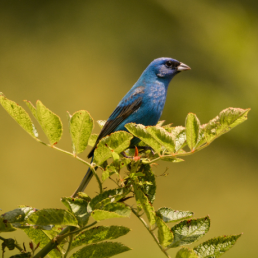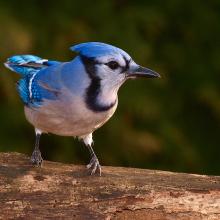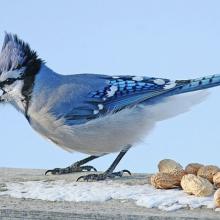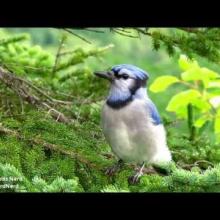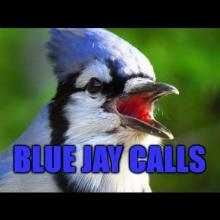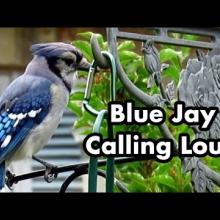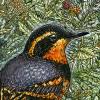BirdNote®
Jaywalking
Written by Frances Wood
This is BirdNote!
[Call of Blue Jay]
You’ve heard the term “JAY-walking”. Any idea where it comes from? Traffic signals and jay-birds wouldn’t seem to have much in common. [More Blue Jay calling.]
Well, the term “jaywalking” originated back in 1917. Cars had recently become common on the streets of Boston and, for the first time, the act of stepping out into traffic posed a problem. [Model-T horn, ah-OO-gah] In those days, jaywalkers would encounter Model-Ts tooling along at the break-neck speed of 20 miles per hour.
The term “jay” was then slang for a hick, a rube, or a country bumpkin. Sophisticated city dwellers with little tolerance for rural folk coined the term “jaywalker” to describe someone green to the ways of the city – and to modern traffic signals.
[Model-T horn, ah-OO-gah]
But why “jay”? Anyone who has observed the eastern Blue Jay [Call of Blue Jay] or the Steller’s Jay of the West [Call of Steller’s Jay] would describe them as noisy, bold, brash…and impudent.
So those sophisticated Bostonians might have combined the foolish country bumpkin term and the sometimes obnoxious nature of jay behavior when they coined the term “jaywalking.” Who knows for sure? If you do, come join the conversation on our Facebook page or our website, birdnote.org.
[Model-T horn, ah-OO-gah followed by call of the Steller’s Jay]
I’m Mary McCann.
[Call of the Steller’s Jay]
###
Bird audio provided by The Macaulay Library of Natural Sounds at the Cornell Lab of Ornithology, Ithaca, New York. Blue Jay recorded by G.A. Keller. Steller’s Jay recorded by L.J. Peyton.
Ambient sounds by Kessler Productions.
Producer: John Kessler
Executive Producer: Chris Peterson
© 2014 Tune In to Nature.org January 2017/2021 Narrator: Mary McCann
ID# 010507jaywalk jaywalk-01c


